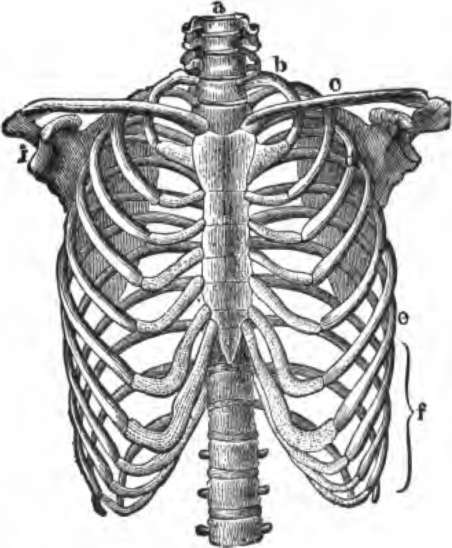How The Air Is Renewed In The Lungs
Description
This section is from the book "The Human Body: An Elementary Text-Book Of Anatomy, Physiology, And Hygiene", by H. Newell Martin. Also available from Amazon: The Human Body.
How The Air Is Renewed In The Lungs
Suppose in Fig. 67 that the bottle A has a movable bottom, by pulling down which its capacity can be increased, and that all air has been sucked out of the bottle through c, which is then closed. The elastic bag will then be distended by the weight of the atmosphere acting upon its interior so as to fill the bottle and press against its sides. If now the movable bottom of A be pulled down so as to make the cavity of the bottle larger, the bag would have a larger space to fill. The impediment on its outside being removed the atmospheric pressure on its inside would expand it still further, and the elastic bag would swell out to fill the extra space. As the movable bottom was pulled down, the bag would enlarge and receive fresh air through b. When the bottom was raised again the bag would diminish, and some air be driven out of it through b. It is in quite a similar way that the air is renewed in our lungs by breathing. When we breathe-in, the thoracic cavity is enlarged and air enters the lungs; when we breathe-out, the thorax is diminished and air driven out of the lungs.
Apply to the lungs the facts illustrated by the model represented in figure 67.
Suppose we have a bottle like that in Fig. 67, but with a movable bottom, what would happen when the bottom was pulled down ?


Fig. 68. The skeleton of the thorax, a, g, vertebral column; b, first rib; c, clavicle; d, third rib; i, glenoid fossa.
How would the bag inside it be affected?
What would the bag receive? What would happen when the bottom was again raised? What happens when we breathe-in?
Inspiration And Expiration
The process of taking air into the lungs is known as inspiration, that of expelling it as expiration. On the average, fifteen to eighteen inspirations and expirations occur in each minute. We therefore breathe in and out about once for every four beats of the heart.
Continue to:
